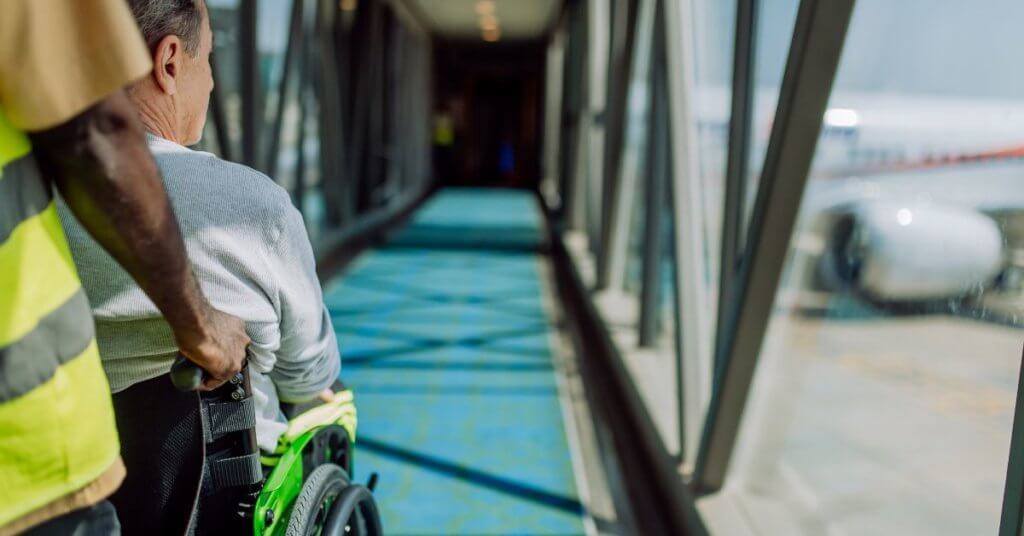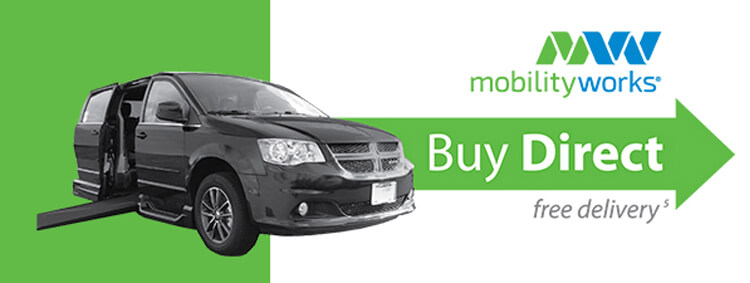Traveling by air can be challenging for anyone. The Air Carrier Access Act and the Airline Passengers with Disabilities Bill of Rights set stricter rules in an attempt to make flying easier for people with disabilities, but it is also important to be aware of these guidelines yourself. Prepare in advance with these 14 tips for a more leisurely, less stressful flight.
Before Boarding
Plan Ahead. This may seem simple but be sure that you have your reservations in order as far in advance as possible. When booking, take the time to note any special requests. It’s never a bad idea to call the airline to discuss your mobility needs, including arrangements for your wheelchair, seating accommodations, and the loading and stowing of any assistive devices. In addition, you should keep your travel information close by so that it is readily available throughout your travels.
Call Your Doctor. Make sure that flying will not affect your health. Ask your doctor if they have recommendations for emergency contacts in your destination. If your doctor does not know any, it’s worth searching online and asking friends so that you have someone to reach out to should a situation arise while traveling. Be sure to get prescriptions filled, as you will want to pack those on your carry-on.
Charge Your Phone and Devices Ahead of Time. Ensure your phone and tablet are fully charged before leaving for the airport. Write a note to remind yourself before going to bed the night before. Have earbuds with you in your carry-on.
Confirm, Confirm, Confirm. You can’t talk to too many different airline officials to confirm that your needs will be met and ask any questions you have. You can call the airline directly at the number listed on their website.
Prepare Your Weelchair. Be sure your chair is in good shape for travel and have an emergency repair kit just in case. You should also consider bringing a copy of any special handling instructions for your wheelchair for airline personnel to reference.
At the Airport
Arrive Early. On the day of your flight, you should arrive extra early to go through security and ensure all necessary equipment is in order. Any equipment taken from you in flight should be tagged with your contact information.
Obtain a Luggage Claim Receipt. Your wheelchair will be checked by the airline with other luggage, so be sure you have a receipt to claim your wheelchair.
Work With the TSA. If you cannot walk through a metal detector, notify a TSA agent so that you can be hand-wanded. If you have any sore or sensitive areas on your body, alert the agent. You are allowed to have a private screening with a companion of your choice there.
Make Boarding Requests Known. Right before and as you board, remind crew members of any special needs or requests you may have during the flight.
Remove Pads as You Board. Padding like seat cushions and leg supports don’t tend to travel well with other luggage. Bring a bag so you can remove these from your wheelchair as you are boarding and your wheelchair is taken.
Ask About the Lavatory. It’s a good idea to use the restrooms before you board, as many lavatories marked as accessible are still relatively small and difficult to maneuver. Ask the desk attendants at the gate for more details.
Prepare for Layovers. If you have a layover, ask that your equipment be returned while you are in the airport. This will keep you independent and mobile, and lessens the risk of damage to your equipment.
In Flight and After Landing
Speak With the Crew While in Flight. Remind the flight attendants that you need your equipment brought to the gate. If you do this before you land, the crew can communicate with gate officials ahead of time to make those arrangements.
Communicate. If something goes wrong during the flight, feel free to speak up so that you and other travelers hopefully don’t face the same difficulty again. If you experience inaccessibility during travel, ask to speak to a Complaints Resolution official. You can also file a written complaint within 45 days of the incident. The airline is required to respond within 30 days.
If you have any questions, you can always contact your airline. Each airline must follow the Air Carrier Access Act, which covers access on all flights to and from the United States. In addition, you can call the US Department of Transportation with any transportation-related questions.
Plan Ahead for Accessible Transportation
Most airport and hotel shuttle providers, such as SuperShuttle, will have wheelchair accessible vans equipped with a lift (but not all in their fleet). Make sure to let them know ahead of time that you are using a wheelchair and will need to have an accessible van when getting picked up.
MobilityWorks offers rentals in many states. These vehicles are often booked weeks (even months) ahead of time during the holidays. Plan ahead by contacting us as soon as you know your travel schedule. The sooner, the better! For more information about our accessible rentals, click the button below.
Stay Connected!
Sign-up with our email list to receive our latest promotions, news and events!




